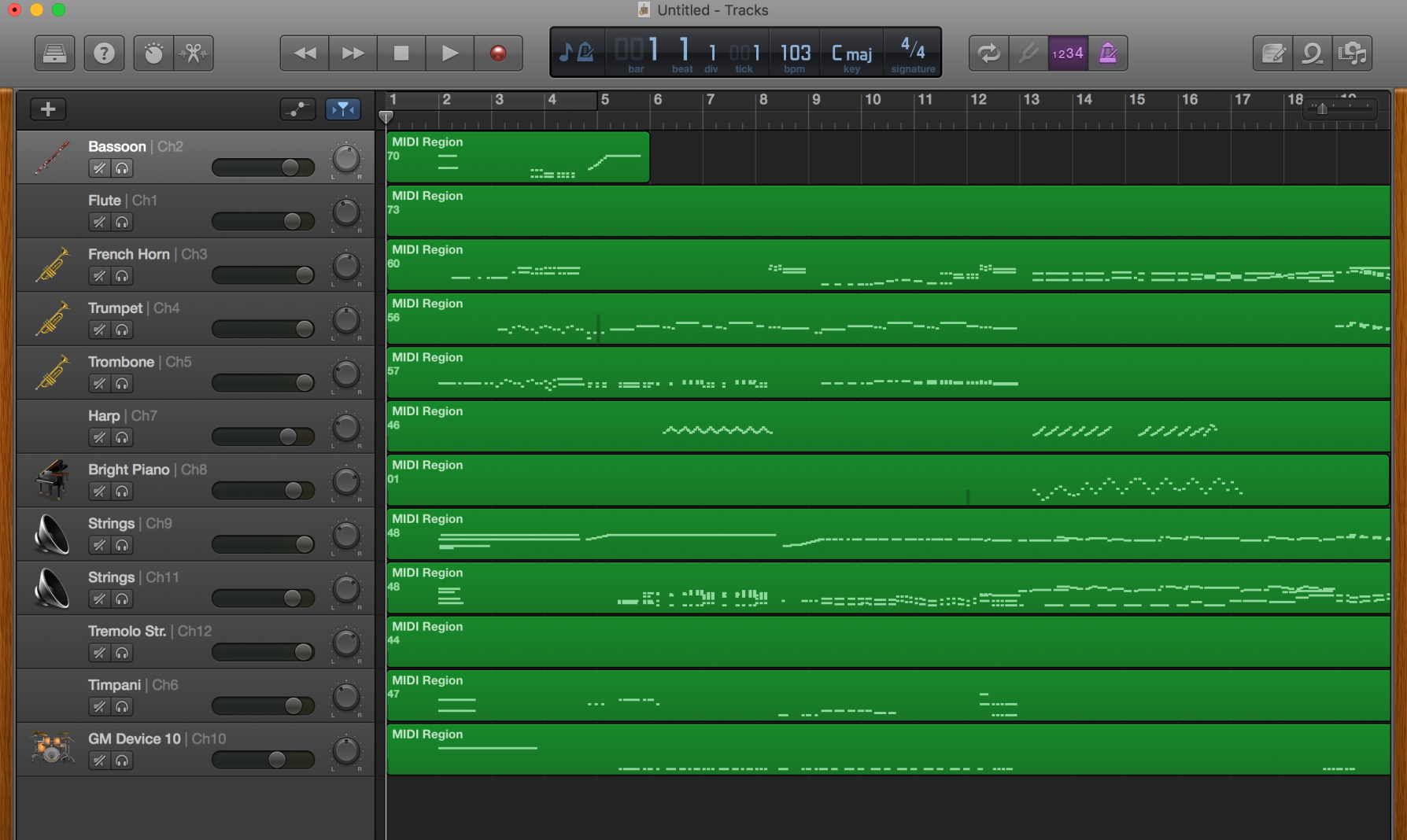Computers are good at recording, playing back, and generating audio
Uses different file formats
- File formats are just a way of storing 0s and 1s on disk so that certain software knows how to interpret it
MIDI
- Way of storing musical notes for certain songs
- Can do this for different instruments
- Programs can render the notes for these instruments
GarageBand
- Included with macOS

- This is the Star Wars theme in MIDI
- Doesn’t sound quite as good as the actual version
- The computer synthesizes the notes
- Not an actual recording
- The computer interprets notes in the MIDI file
MIDI is common in the digital workspace among musicians who wish to share music.
Humans typically like to hear music performed and recorded by humans
- File formats for recorded music include:
- AAC
- MIDI
- MP3
- WAV
WAV is an early sound format, but still used
- Uncompressed data storage allows high-quality
MP3
- File format for audio that uses compression
- Significantly reduce how many bits are necessary to store a song
- Discards 0s and 1s that humans can’t necessarily hear
- True audiophiles may disagree
- The trade-off between optimizing storage space and sacrificing quality
- This compression is said to be lossy
- Losing the quality in the compression process
AAC
- Similar to MP3
- May see when you download a song from iTunes
Streaming services such as Spotify don’t transfer a file to you but rather stream bits of information to you
How do we think about the quality of these formats?
- Sampling frequency
- Number of times per second we take a digital snapshot of what a person would hear
- Bit depth
- The number of bits used for these individual snapshots
- Sampling frequency x bit depth = number of bits necessary to store one second of music
- Audio file formats allow you to modify what these parameters are
